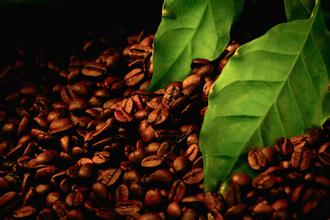Get rid of "Coffee" Starbucks is unfettered
Interview / Lin Zhiyuan's Starbucks Coffee, which has been used in Starbucks' Logo since its birth, is now a thing of the past. Behind the transformation, can Starbucks really be free on the road of diversity? Starbucks finally made a great effort to
Interview and writing / Lin Zhiyuan
"Starbucks Coffee", which has been used in Starbucks' Logo since its birth, is now a thing of the past. Behind the "transformation", can Starbucks really be free on the road of diversity?
Starbucks finally put "reform" on the table with great fanfare.
On March 8, at the celebration of Starbucks' 40th anniversary, the "three Musketeers", the fourth global change of standards, the official entry into China's tea market, and the new strategy to promote the development of retail channels in Greater China, were all unveiled. "unfettered" is one of the most favorite words of Starbucks executives in this celebration.
Where are the restraints? As we all know, Starbucks had to close a large number of stores around the world due to the sudden increase of operating pressure in the financial crisis, and the competition from the industry made Starbucks restless in the post-financial crisis era.
Take China, the most potential market, as an example. At present, international brand coffee chains, such as Costa and Baiyi, have taken root in China, while McDonald's, which represents traditional foreign fast food, has launched McCoffee, and KFC has also launched meals with Chinese characteristics. This diversified development trend of hand-to-hand combat has made Starbucks, which has long adhered to the characteristics of traditional coffee, finally impatient and resolutely raised the banner of "reform".
Does Starbucks "mark" the beginning of success or failure?
"Starbucks Coffee", which has been used in Starbucks' Logo since its birth, is now a thing of the past. John Culver, president of Starbucks Coffee International, said, "this does not mean that we have forgotten our roots, but that we want to have a new degree of freedom to meet the future development trend."
For Starbucks, it is a matter of life and death to lock in the path of diversified development. Since 2006, Starbucks has closed stores in large areas around the world due to operating pressure. In 2010, its Q4 financial report showed that net profit increased by 86% compared with the same period last year, and operating revenue increased by 17%. However, the results can not hide the hidden worries of Starbucks' relatively single business model in the future development.
The most obvious industry challenge comes from McDonald's McCoffee system. Some industry insiders said, "Starbucks has far fewer stores than the McCoffee system, and both coffees focus on Arabica (the world's most expensive Central and South American coffee beans), so it won't be long before Starbucks' advantage will be greatly weakened."
In fact, Starbucks has been experimenting with diversified models in recent years, such as selling wine and beer in Seattle and making moon cakes in China.
For the current transformation of Starbucks, raised questions from all sides, and even said, "Starbucks now seems to have a lot of money left, dare to challenge, not afraid of failure."
Take the domestic market as an example, due to the influence of comprehensive localization, Starbucks' milk, coffee beans, dim sum, and even coffee cups are almost locally supplied, but now the change of brand logo and the strategic intention to set foot in the tea market, all make Starbucks' boundaries between China and the West more blurred, and whether its brand concept can be effectively continued implies more uncertainties.
For example, in some cities, many coffee shops deliberately adopt a brand image similar to Starbucks Logo to attract customers. As a result, some consumers wrote on Weibo after seeing the new Starbucks logo, "in the future, there will be no distinction between Starbucks and fake Starbucks."
Of course, the impact of "shanzhai" on Starbucks is limited after all, but some brand experts believe that removing the English words from Starbucks will weaken its brand identity, which is very disadvantageous to the marketing of retail channels. This is what Starbucks should focus on.
Iris, an American who has the title of "Father of Positioning" internationally, believes that "it is a mistake for Starbucks to launch a new brand logo." In the short term, this has little or no impact on the brand itself. But in the long run, the brand itself may suffer setbacks. "
"when existing loyal Starbucks customers are replaced by a growing younger generation, the latter may no longer associate the mermaid logo with Starbucks coffee," he said. "
How can the newcomers who try to diversify catch up?
Without the "shock and awe" of the word "coffee" in the logo, Starbucks does not need to hide its ambition to dominate all kinds of markets. Starbucks executives have made it clear that they will expand their business in non-coffee tea, other drinks, dim sum and other products, and with the simultaneous launch of Starbucks VIA brewed coffee in Chinese mainland, Hong Kong, Macao and Taiwan, there will be a new "street war" in the retail market.
"China is Starbucks' second home market, and vigorously expanding in China, including convenience stores, retail stores and other food service areas, is our new development opportunity." John Culver said.
However, not all in the industry are bullish on Starbucks' new strategic initiatives.
Take VIA non-brewing coffee as an example, among the eight major brands currently on sale in China, Nestle and Maxwell alone have won almost half of them. The price of Starbucks' VIA series (25 yuan for 3 packages and 88 yuan for 12 packages) is almost twice that of its competitors, which will be greatly affected in terms of sales. In addition, it will take a long time for people who are already familiar with the taste of fast-consuming coffee to accept VIA.
Mr. Zhu, a senior executive in China of Canada's Baiyi, another international coffee brand, believes that from a marketing perspective, Starbucks has developed a high-end brand in a low-end category, and he has a relatively positive view of Starbucks' move. But Mr. Zhu also said that how to do a good job in this high-end market for a long time, Starbucks, a latecomer to the mass retail channel, may need to think carefully.
Starbucks actually doesn't care about the "worries" of the industry. In the second half of 2009, when VIA was officially launched to the international market for only 10 months, its sales exceeded 100 million US dollars. Among the similar competitive products, only 3% of the new products can achieve this result. " Wang Jinlong, chairman of Starbucks China, believes that VIA unbrewed coffee will be a success in the Chinese market.
However, not all new businesses have experience to follow. In this celebration, Starbucks once again made clear its strategic plan to enter the Chinese tea market, which is regarded by the outside world as the biggest move of its localization transformation.
Huang limin, vice president of marketing, product and communication at Starbucks Greater China, said Starbucks actually began distributing tea products in all its stores around the world 40 years ago, including two main products, English black tea and Earl black tea. In the current domestic market, there are also 9 new tea products, such as white peony, which can be sold in stores.
Starbucks executives believe that the introduction of Chinese tea is one of the important signs of its diversified development. But many consumers are skeptical about it.
Xue Kaiyuan, a young playwright who loves the tea ceremony, said: "Chinese people pay attention to a kind of artistic conception when drinking tea, which is completely different from the way Westerners strive to standardize everything they do, just like cooking. Westerners will tell you how many calories a dish is, and the Chinese will ask you how it tastes."
Xue believes that many of the seats at Starbucks are hard, including many foreign fast-food stores, which is not conducive to the long-term tea drinking and chatting that Chinese people are used to.
And Starbucks, as Xue said, its tea drinks target consumers do not "target" traditional tea drinkers, but mainly to attract the attention of young people. They are using the "classic consumption form + Starbucks fashion concept" to seek a breakthrough, of course, the effectiveness remains to be tested by the market.

Important Notice :
前街咖啡 FrontStreet Coffee has moved to new addredd:
FrontStreet Coffee Address: 315,Donghua East Road,GuangZhou
Tel:020 38364473
- Prev

Winner of Indonesian Coffee Princess Pageant announced
Indonesia is a country rich in coffee. This year, Indonesia held the first coffee princess beauty pageant. What are the conditions for being an Indonesian coffee princess? let's go to the scene and have a look. In the early morning of April 19, after a five-hour competition, Indonesia was a coffee-rich country. This year, Indonesia held the first coffee princess pageant as Indonesian coffee.
- Next

The campaign in Sandy State, Malaysia begins to open coffee shops and become a new war zone.
With the flames of war in the sand state election in Malaysia, coffee shops in ethnic Chinese constituencies have become a new war zone that militants must fight for. With the start of the state election campaign and the heating up of the election situation in the Merihua district, the PPP and the Action Party both held political lectures in coffee shops in the prosperous business district and rushed to seize Chinese votes. In order to close the gap with the public, the people's Union Party has changed its previous way of holding dinners and participating in group activities in restaurants.
Related
- Customers have "changed" Manner's new products! Shop assistant: Please don't mess around!
- Remove sockets in customer areas at Starbucks stores?! Netizen: I won't go if I really tear it down
- What is the difference between the taste steps of sun-dried coffee and washed coffee? Why is sun-cured coffee sweeter and washed coffee sour?
- The recipe for salty grapefruit dirty is revealed! Coffee Festival salty grapefruit dirty coffee making materials parameters ratio milk share!
- How about the flavor of Sunlight 74158 at Sidamo Banshaha Mathieu Processing Factory in Ethiopia? 74158 Share the proportion of coffee brewing parameters!
- What effect does Italian American coffee with filter paper have? Will coffee taste better if it is put on filter paper at the bottom of the powder bowl?
- What is the color difference in coffee beans? What are the characteristics of honey processed coffee beans? Why are the anaerobically treated coffee beans uneven in color?
- How does novice Xiaobai quickly get started and make coffee? Newbies learn to make coffee by hand and share the specific steps and process process!
- Costa tea has a shelf life of 100 years?! Expert: Unable to verify
- It's a huge uproar! American milk addition was rejected by Manner employees?!

